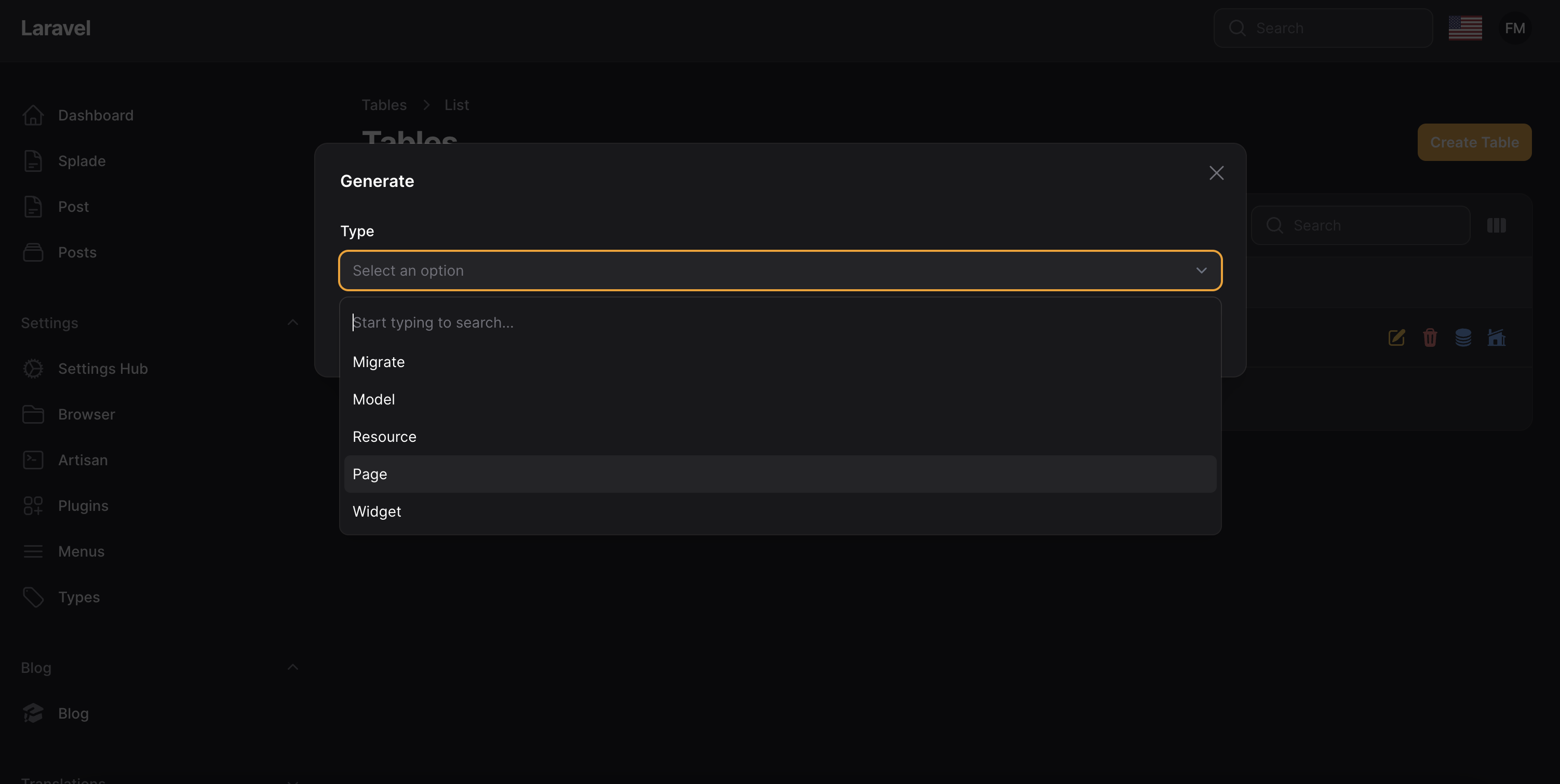tomatophp / filament-plugins
Manage your modules as a plugin system with plugin generator
Fund package maintenance!
3x1io
Installs: 4 298
Dependents: 3
Suggesters: 0
Security: 0
Stars: 62
Watchers: 2
Forks: 15
Open Issues: 2
Language:Dart
pkg:composer/tomatophp/filament-plugins
Requires
- php: ^8.1|^8.2
- calebporzio/sushi: *
- filament/filament: ^3.0.0
- filament/notifications: ^3.0.0
- nwidart/laravel-modules: ^11.0
- tomatophp/console-helpers: ^1.1
- tomatophp/filament-icons: ^1.0
README
Filament Plugins Manager & Generator
Manage your modules as a plugin system with plugin generator
Screenshots
Installation
composer require tomatophp/filament-plugins
after install your package please run this command
php artisan filament-plugins:install
By default the module classes are not loaded automatically. You can autoload your modules by adding merge-plugin to the extra section:
"extra": { "laravel": { "dont-discover": [] }, "merge-plugin": { "include": [ "Modules/*/composer.json" ] } },
now you need to run this command to autoload your modules
composer dump-autoload
finally reigster the plugin on /app/Providers/Filament/AdminPanelProvider.php
->plugin(\TomatoPHP\FilamentPlugins\FilamentPluginsPlugin::make())
Usage
you can create a new plugin using just a command
php artisan filament-plugins:generate
or you can use the GUI to create a new plugin, after create a plugin you need to make sure that it's loaded on composer by run this command
composer dump-autoload
after create the plugin you can create a new table inside it and than run the migration generator to convert it to a migration file then you can use the GUI to generate resources, pages, widget or model, or you can easy use this commands
php artisan filament-plugins:model php artisan filament-plugins:resource php artisan filament-plugins:page php artisan filament-plugins:widget
it will generate the files for you and you can use it directly, please note that you need to generate the model first than use other commands
Install Plugins using command line
you can install a plugins using the command line by using this command
php artisan filament:plugins
you can select all to install all TomatoPHP ecosystem plugins or you can select the plugin you want to install
List of all TomatoPHP Plugins
you can list all TomatoPHP plugins by using this command
php artisan filament-plugins:list
List your package on the plugins list
you can list your package on the plugins list by adding this a json file in your package root folder with name module.json with content like this:
{
"name": "FilamentAccounts",
"alias": "filament-accounts",
"description": {
"ar": "full accounts manager with API\/Notifications\/Contacts to manage your contacts and accounts",
"en": "full accounts manager with API\/Notifications\/Contacts to manage your contacts and accounts",
"gr": "full accounts manager with API\/Notifications\/Contacts to manage your contacts and accounts",
"sp": "full accounts manager with API\/Notifications\/Contacts to manage your contacts and accounts"
},
"keywords": [],
"priority": 0,
"providers": [
"TomatoPHP\\FilamentAccounts\\FilamentAccountsServiceProvider"
],
"files": [],
"title": {
"ar": "Filament Accounts",
"en": "Filament Accounts",
"gr": "Filament Accounts",
"sp": "Filament Accounts"
},
"color": "#007dff",
"icon": "heroicon-c-user-circle",
"placeholder": "placeholder.webp",
"type": "lib",
"version": "v1.0",
"github" : "https://github.com/tomatophp/filament-accounts",
"docs" : "https://github.com/tomatophp/filament-accounts"
}
make sure you allow packages scan on the filament-plugins.php config file
'scan' => true
now you can publish your package as module with the very easy way use this command
php artisan filament-plugins:publish
and input your package name from the list and it will move it to your module folder and register the provider to you, so you can custom anything you like on the package.
Use Selected Module in your panel
you can use the selected module in your panel by using this code in your PanelProvider
->plugin(\TomatoPHP\FilamentPlugins\FilamentPluginsPlugin::make()->modules([ 'CRM' ]))
so you will see only the selected modules in your panel
Get Only Current Panel Plugins
on any plugin you can create a Page/Resource/Widget for selected panel, so if you need to showup only the current panel Page/Resources/Widgets you can use this code in your PanelProvider
->plugin(\TomatoPHP\FilamentPlugins\FilamentPluginsPlugin::make()->discoverCurrentPanelOnly())
Stop Auto Discover Module Resources
you can stop auto-load module resources by using this code in your PanelProvider
->plugin(\TomatoPHP\FilamentPlugins\FilamentPluginsPlugin::make()->autoDiscoverModules(false))
Stop Using Plugins UI
you can stop using the plugins UI by using this code in your PanelProvider
->plugin(\TomatoPHP\FilamentPlugins\FilamentPluginsPlugin::make()->useUI(false))
Publish Assets
you can publish config file by use this command
php artisan vendor:publish --tag="filament-plugins-config"
you can publish views file by use this command
php artisan vendor:publish --tag="filament-plugins-views"
you can publish languages file by use this command
php artisan vendor:publish --tag="filament-plugins-lang"
you can publish migrations file by use this command
php artisan vendor:publish --tag="filament-plugins-migrations"
Other Filament Packages
Checkout our Awesome TomatoPHP






